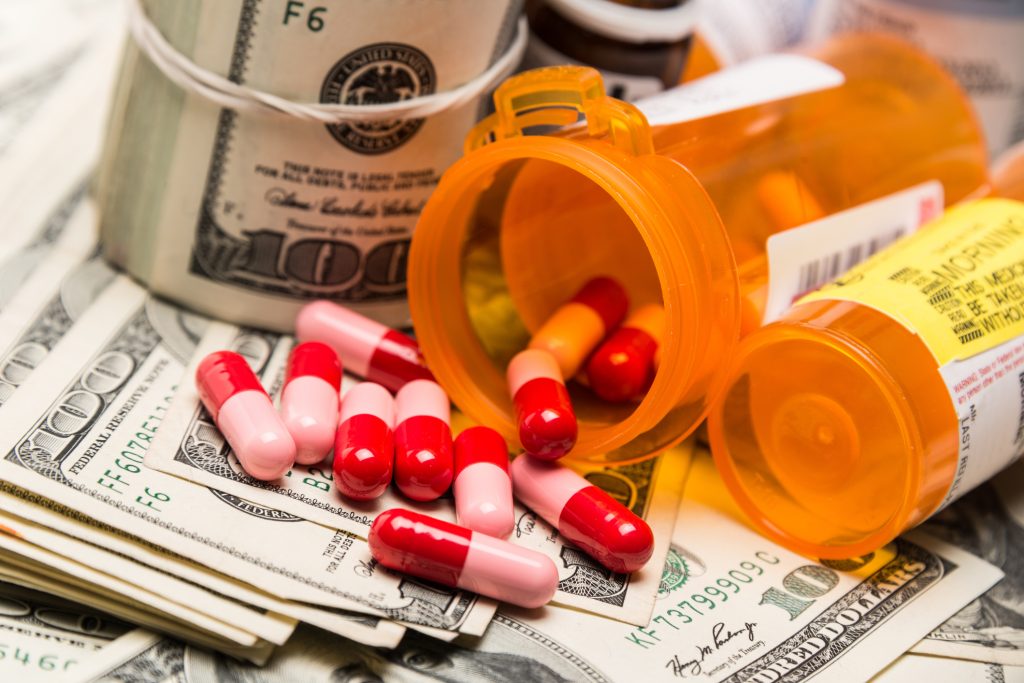
President Donald Trump has begun a sweeping crackdown on direct-to-consumer drug advertising as part of his administration’s Make America Healthy Again campaign, which could alter the way the U.S. pharmaceutical industry markets products to consumers. This policy shift comes against the backdrop of more than $102 million in lobbying on pharmaceutical manufacturing in the first six months of 2025, making the drug industry one of the most powerful lobbying forces in the country.
On Sept. 9, Trump signed a memorandum that delivered on Health and Human Services Secretary Robert F. Kennedy Jr.’s long-running campaign against the perceived “pipeline of deception” of direct-to-consumer drug advertising. Kennedy has been pushing to end the “adequate provision” loophole in the Food and Drug Modernization Act; this loophole allows drug companies to avoid listing all side effects in commercials as long as they direct viewers to another source, like a website or phone number. The rule, adopted in 1997, paved the way for today’s fast-paced and cheery ads that often confine side effects to a few seconds of fine print.
Today, pharmaceutical companies spend more than $10 billion a year on direct-to-consumer advertising, with the U.S. and New Zealand being the only countries that permit it. In 2022 EU regulators became outraged when Lady Gaga endorsed the migraine drug Nurtec ODT on Instagram, where the content was broadly accessible to EU viewers despite a ban on such ads.
Big-budget ads, bigger problems
On the same day the memorandum was delivered, the FDA revealed it had issued thousands of warnings and around 100 cease-and-desist letters to major drug companies that alleged violations of federal advertising rules.
One letter, sent to AstraZeneca, accused the drug company of downplaying risks in a commercial for FluMist, its flu vaccine. Regulators said the “fast pacing” and visuals distracted viewers from important safety and side effects information. The letter was signed by Dr. Vinay Prasad, the Trump-appointed director of the FDA’s Center for Biologics Evaluation and Research who in 2021 compared America’s Covid-19 response to Nazi Germany.
Other big-budget ads were also pulled. These include a spot for Attruby featuring Morgan Freeman removed for suggesting the drug generally improves quality of life, which was not supported by substantial evidence. Bristol Myers Squibb’s Camzyos commercial showing a man playing basketball after treatment was flagged for implying patients could resume strenuous activity without any restrictions. Jardiance, manufactured by Boehringer Ingelheim, suffered a similar fate as its disclosures were deemed unreadable due to tiny font and poor contrast.
Nine days after the memorandum, HHS also rolled out a parody MAHA direct-to-consumer ad in an attempt to skewer Big Pharma’s marketing tactics. The video showed a smiling family with a dog while the narrator cheerfully warned that “MAHA may cause healthier living, fewer chronic diseases, and lower drug costs … other side effects may include transparency in healthcare and accountability from Big Pharma.”
Earlier, on Jun. 12, the End Prescription Drug Ads Now Act was introduced in the Senate by Senator Bernie Sanders (I-VT) and Senator Angus King (I-ME), but has not yet been passed. The act would prohibit all advertisements of FDA-approved prescription drugs and biologics in any promotional format.
Pharma’s big lobbying spend
The pharmaceutical manufacturing industry is one of the most politically engaged industries in the United States. In the 2024 election cycle alone, the industry spent $151 million on federal lobbying, activity involving 139 companies deploying 738 lobbyists. Close to two-thirds of these pharmaceutical lobbyists have gone through the “revolving door,” meaning they are former government employees or elected officials who pivoted to positions as lobbyists, consultants, and strategists for private companies.
The industry’s main trade association, Pharmaceutical Research and Manufacturers of America, is consistently among the top spenders in Washington. In the first quarter of 2025 alone, PhRMA logged its highest-ever quarterly spending at nearly $13 million. Major firms like Pfizer, Merck, and Eli Lilly also poured millions into lobbying efforts, even as some faced cease-and-desist orders over their TV advertising practices. Overall, pharmaceutical and health product companies spent $388.21 million on lobbying in 2024, and in just the first half of 2025, they have already spent $226.78 million. If this trajectory continues, total lobbying expenditures in 2025 will reach a new annual high.
On the campaign side, drug manufacturers have spread money across party lines, but clear partisan patterns emerge. Pfizer’s political action committees and employees gave $2.8 million, split $1.6 million to Democrats and $1.1 million to Republicans. Merck followed, giving more than $2 million in 2024, with $1.5 million going to Democrats and $728,000 to Republicans. Eli Lilly, generally Republican-leaning, split its contributions more evenly between the two parties. Overall, most multinational pharmaceutical giants, including Novo Nordisk, Bristol-Myers Squibb, AstraZeneca, Novartis, and Takeda, tend to tilt Democratic, especially in the past two presidential elections.
This trend is shown in 2024 election figures. In 2024, the pharmaceutical industry gave $9.9 million to Democrats compared with $6.3 million to Republicans. Contributions dropped from the record-setting $18.6 million total in 2020, when Democrats received $15.3 million and Republicans $12.6 million. At the candidate level, the split was even more tangible; Kamala Harris received $2.47 million, and Donald Trump received just $467,000.
Consequences for Big Pharma
The crackdown comes with serious consequences for the pharmaceutical industry. The Federal Food, Drug, and Cosmetic Act regulates misbranding drugs with false or misleading claims. Violations were previously handled via FDA warning letters or civil penalties, but the Justice Department has started to move these cases from its Civil Division to its Criminal Division, which could lead to executives and companies facing prosecution, not just fines.
This new administrative stance could provoke a constitutional fight. The Supreme Court has ruled in cases such as Central Hudson Gas & Electric Corp. v. Public Service Commission that commercial speech is protected under the First Amendment. Industry lawyers are already asking whether Trump’s crackdown crosses that line. Other FDA-regulated products from dietary supplements to medical devices could soon face a similar fate.The Trump administration has also been looking beyond advertising to lower national drug costs. On Sept. 30, Trump rolled out TrumpRx, a federal platform that will allow Pfizer to sell discounted medications under a “most favored nation” agreement guaranteeing Americans won’t pay more than patients abroad. The announcement came a day after the Pharmaceutical Research and Manufacturers of America shared its own direct-to-consumer sales site, set to launch in 2026. The deal spares Pfizer from threatened tariffs; however, its impact on privately insured patients is uncertain.














